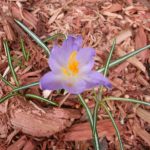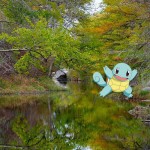
Resident of Nashville? Check out our Nashville lawn services page to see what we can do for your lawn.
Gardeners in Nashville have an opportunity to lessen the ever-increasing strain on our ecosystem. We just have to “go with the flow” and follow what nature has been doing so well for countless thousands of years: bugs and birds protect plants from harmful bugs, plants keep each other healthy and organic matter decomposes and returns nutrients to the soil. Environmentally responsible gardens are helping to slow down climate change, save energy resources and reduce waste.
Here are four ways that will help turn your garden into its own natural ecosystem.
Be Kind to Bugs
Whether bugs make you cringe or you delight in watching them, they are essential to an eco-friendly garden. The good bugs, that is. They get rid of the bad bugs (e.g., aphids, spider mites, mealybugs) that are destroying the plants.
Put in plants that attract the good bugs. Ladybugs and green lacewings are among the very best bugs for your garden. They will take up residence in your garden if you plant, for instance, dill, marigolds, prairie sunflower or Queen Anne’s lace. Put your broad spectrum pesticides away. Ladybugs and lacewings will do the job for you.
Ladybug
Photo: DM
Adult ladybugs are round and, at most, about half an inch long. Ladybugs are always depicted with red, black-spotted bodies, but there are also ladybugs that are orange or black; some have spots, some don’t. Their larvae resemble minuscule alligators with orange striping on a blue or black body. Both adults and larvae eat up the pests. Those little ladybugs will ingest thousands of aphids in their lifetimes.
Green lacewing
Photo: Brad Smith
Green lacewings are ½ to ¾ of an inch long with lovely delicate (lacy) wings. Their antennae are long and their eyes are gold or copper colored. Their larvae are tan and also have an alligator-like appearance. The adults feed on nectar, pollen and aphid honeydew. It’s the larvae who will gobble up the eggs and pre-adult stages of garden pests.
Feed the Birds
Build a house and they will come. Install bird feeders and nesting boxes that will attract a variety of birds. Fill them with seeds. In no time, birds will be protecting your garden from invasion by snails, slugs, caterpillars, grubs, and any other pests who dare to threaten it. (They’ll also keep mosquitoes from bugging you.) Birds are a beautiful and safe alternative to synthetic insecticides. They are also endlessly fascinating to watch.
Set Up a Buddy System
Photo: bonnieplants.com
Some plants work well together, and some plants don’t. Just like people. Companion planting is putting plants together that have a healthy kind of co-dependency—in providing nutrients, warding off disease, repelling pests and attracting the good bugs. For example, carnations keep slugs away from roses and lavender. Roses and lupin make a great team; they get bigger and stronger together. Marigolds must be the Florence Nightingale of the plant world—they help nearly all other plants.
Before planting, you have to do the necessary research to take full advantage of companion planting (in lieu of a Match.com app for plants). You don’t want to have “nightmare neighbors” in your garden.
Compost
Photo: Melanie J Watts
Every year, about 28% of the food and yard waste created by Nashville residents could be composted and kept out of landfills. Instead of generating methane gas, the waste could be nourishing your garden soil, preventing plant diseases and making that native clay soil drain better.
In a bin, collect organic material such as leaves, grass clippings, vegetable peels, table scraps, coffee grounds and shredded paper (no meat, fish, or bones). The material will naturally recycle into a rich soil additive that some gardeners call “Black Gold.” You can provide your garden with the nutrients it needs without chemical fertilizers—a boon to the environment and your wallet!










